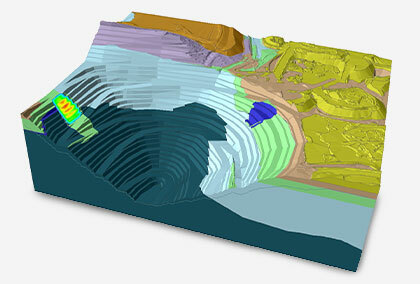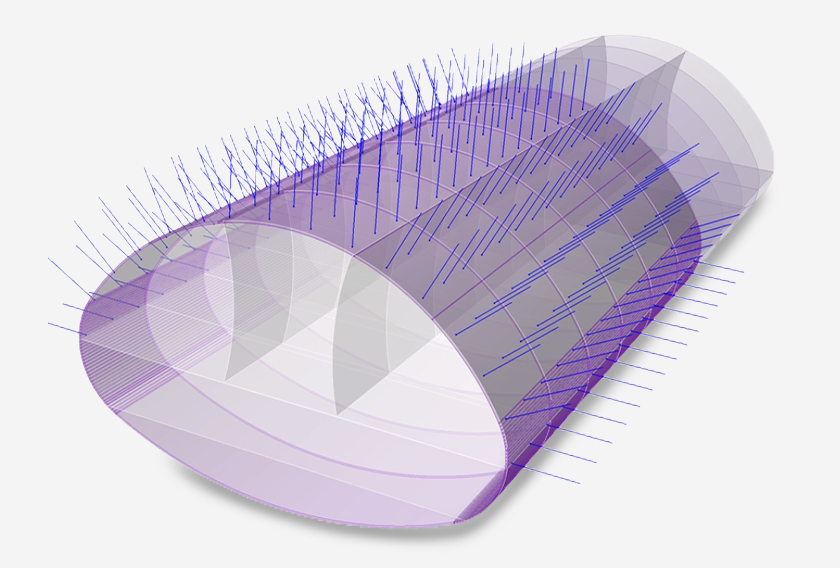Who Said Elastic Models are not Useful?
by Dr. Reginald Hammah
Introduction
Quite frankly, modelling can be a pain. But does it have to be so? I do not think so. At a minimum, it can be made less painful or more pleasant. This brief article will show how we can use elastic models to alleviate our numerical modelling pains.
Elastic vs Plastic Material Behaviour
The geologic materials we encounter in rock engineering have many stress-strain behaviours. Elastic behaviour represents the most straightforward material constitutive relationships – stress only depends on the current strain or state of deformation. Once loads are removed, materials return to their original shape, indicating that such strains are fully reversible. Practically all the materials we encounter have ranges within which they behave elastically.
Once a specific stress range or limit is exceeded (and typically, we characterize these limits with material strength), stress no longer solely depends on the current value of strain; it now also depends on loading history or other material characteristics. Once their strength is exceeded, materials will experience irreversible (also known as plastic) deformations. The plastic behaviour of materials can be very complicated and involve several parameters.
Using Numerical Modelling to Solve Geotechnical Engineering Problems
Geotechnical engineering analysis and design require us to determine stress redistributions and concentrations (and accompanying displacements or strains) associated with excavation or loading. Large-enough compressive stresses can exceed the strength of rock masses and large geological structures, resulting in failure mechanisms such as rockbursts, spalling, and buckling (or heaving) of strata. For soils and weak rocks, such stresses can cause squeezing, excessive deformation of excavations and significant ground subsidence.
Rock masses are weak in tension. Areas in which tensile stresses develop may experience opening and sliding of existing discontinuities or the creation of new fractures. These conditions often lead to large block movements that result in instabilities such as unravelling.
As geotechnical engineers, we do not simply wait for events to unfold during excavation or construction. We proactively use empirical, analytical, and numerical modelling tools to determine the stress redistributions and displacements around openings. We employ models to assess likely outcomes based on the knowledge and information we possess. We then use the modelling outcomes to develop safe, economical designs. For example, from such analysis, we can establish optimal layouts of our excavations that minimize negative impacts. We can also understand how best to support openings.
Today, numerical modelling is key to our rock engineering analysis and design. We have several software tools for explicitly estimating the conditions that develop around excavations. These tools are based on numerical methods such as the finite element method (FEM), boundary element method (BEM) and finite difference method (FDM).
Numerical methods are powerful, and they are well suited to modelling situations involving complex material behaviours and complicated excavation geometries and geological arrangements. These include the following Rocscience software tools: RS2, RS3 and EX3.
The Power – and Pains – of Plastic Modelling
Plastic constitutive models can replicate several critical aspects of material behaviour, such as dilation or contraction and the dependence of stiffness on stress levels. As a result, they can improve understanding of soil and rock mass response to excavation and loading. Plasticity models can be instrumental in obtaining more realistic estimates of displacements and ground movements.
However, it is essential to note that no constitutive model, no matter how advanced, represents all aspects of behaviour. As a result, we need to understand the facets that constitutive models capture well and those they handle poorly to use them appropriately.
Although plastic models can improve our designs and enable us to develop more efficient and safe excavations and support, they can also present several problems. Some of them require input parameters that are not easily measured. Even when these inputs are measured for intact rock material, there is often no way to scale them to rock mass properties. Some plastic models are not numerically robust.
Other plastic models converge to equilibrium very slowly; large plastic models can run for weeks or even months before providing answers. We often do not have such time luxury.
The above-outlined challenges constitute why only a few plastic constitutive models are used in practical geotechnical engineering.
Even worse, after waiting a long time for results, we sometimes discover ‘mistakes’ in our inputs. For example, we may realize that we did not specify the correct in situ stress field, improperly restrained the model or were working with a poorly meshed model. And we then must start all over again!
Here, elastic modelling can significantly ease our pain and improve our modelling experience.
The Benefits of Elastic Modelling
Elastic analysis assumes that materials do not fail, and stresses are always uniquely related to strains (often linearly). Elastic modelling is governed by elastic stiffness (Young’s modulus). It, therefore, generally yields lower displacements than those calculated in plastic analysis.
Although elastic models are approximate, they are highly beneficial even when modelling complex constitutive behaviours. A key reason is that, in statically stable situations, most soils and rock masses remain in the elastic range of behaviour. Elastic modelling assumes that the existence of plastic zones does not significantly change stress distributions.
Elastic results can be input into failure or design criteria to assess excavation performance and potential failure zones. For example, they can be superposed on elastic solutions to determine the extents of overstressed zones using criteria such as strength factors or ratios of principal stresses to uniaxial compressive strength.
One of the most significant advantages of elastic analysis is the reasonable results it gives in significantly less time. This speed and usefulness make it possible for us to use elastic analysis to quickly check our models, save time and reduce our modelling pains. We can use it to evaluate the appropriateness of our inputs before running plastic analyses.
We STRONGLY recommend a first pass elastic analysis as a MUST for large numerical models!
Concluding Remarks
This short article presented an overview of elastic and plastic geotechnical engineering modelling and how simple elastic analysis can help you improve your modelling. We encourage you to make your modelling more pain-free and faster by using elastic analysis as a first pass.



